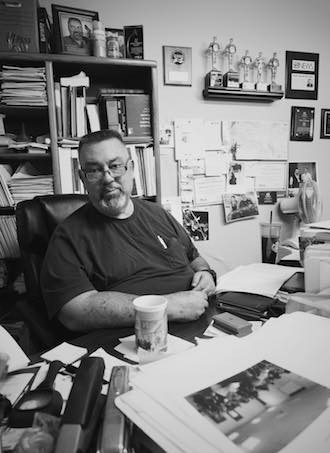

I met Greg in October 1989 in Monrovia, Calif., at a meeting of what would later become the National Plasterers Council. Greg’s passion for water chemistry, the science of plaster and all things cementitious were immediately apparent. He was enthralled with the subject and could talk about chemistry and related technical issues literally for hours.
Greg’s career in the industry lasted more than 40 years. He was a long-time technical advisor for the NPC. He was owner of Applied Materials Technology in Chandler, Ariz. and was a sitting member of PHTA’s Recreational Water Quality Committee. He was a fixture at industry events and was constantly traveling to teach and troubleshoot a spectrum of pool problems. Today the industry is full of people who consider him an influence and mentor, and no doubt many share in the grief of his loss.
When we first met, Greg worked for Shasta Pools in Phoenix and was involved with building some of the company’s most advanced residential and commercial projects. On two occasions, he treated me to tours of Shasta’s work, which deepened my understanding of aquatic construction dramatically. Because he was so adept at explaining technical subjects, I turned to Greg many times as a source.
Greg was both an information sponge and spigot. He shared what he knew in literally hundreds of seminars at trade shows and conferences. Most recently he and renowned industry chemistry expert Robert Lowry launched a new educational program about managing pool chemistry. I attended one of their daylong sessions in September last year and was amazed to think that between the two of them they had nearly a century of industry experience.
Greg was no stranger to controversy and for decades he was part of a vigorous culture of industry debate about the causes of plaster problems, among other related topics. He certainly had his rivals and detractors, but he never shrank from the challenge of answering his critics. He was often dogged in arguing his point of view, which was based on a career of research and study. I didn’t always completely agree with him, but that’s the nature of knowing people with such strong opinions. With Greg, the discussion was its own reward.
We last spoke at length in early August and spent some quality time reminiscing about the old days and our long shared personal and professional history. In his own way, Greg was sentimental and even highly emotional. He still had copies of some of my early articles and remembered some of the text verbatim. We talked at length about a handful of technical subjects including the latest developments about cyanuric acid levels. With Greg, you were never far from an in-depth technical discussion, it was always on his mind. I didn’t realize it at the time, but that last conversation was a beautiful and fitting coda for our friendship.
Greg had the kind of restless spirit necessary for advancing the state-of-the-art. He was in many ways an agent of change and the discussions and debates he engaged were almost always substantive. In short, the industry is a better, more knowledgeable place because of Greg Garrett’s decades of contributions.
Well done, my friend. Vaya con Dios!



































